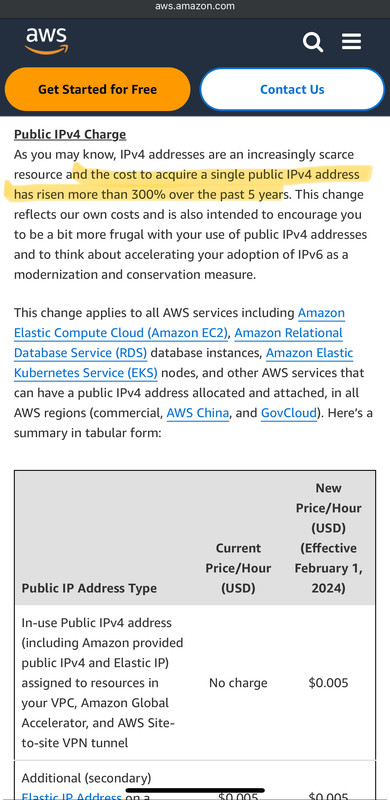QUOTE(failed.hashcheck @ Dec 12 2023, 10:46 PM)
Im referring to brokerage market level, not end user or product pricing. This is more relevant pricing for ISP (or whoever that owns ASN).
ipv4 pricing (at least on /24-20 blocks) stopped climbing around the end of 2021 for whatever reason and going down. not much lower, but it has stopped increasing.
2 years ago APNIC ip was like avg $50 each for /24
Nowadays can get as low as $30
The price of IPv4 has nothing to do with telco decision to remove IPv4. The exercise must start somewhere and it is always the lower tier customers that become lab rats.
As someone who operates network, I cannot wait for IPv4 to die. Given the choice today, I very much want to tell anyone using IPv4 to just go fly kite.
It is my personal opinion that IPv4 pricing is driven by organizations that has substantial holding of IPv4 prefixes. It is like frying in stock market if you get what I mean. It happens because people are lazy to move to IPv6. Everyone who run a dual stack networks are collateral damage.
Also it prevents new player into the market. They will have to buy / lease IPv4 addresses. Will you sign up an ISP who cannot access an IPv4 network?
There are a lot of complexities that comes with operating dual stack network.
If IPv4 runs out, where do we get addresses for dual stack network? There ain't any.
Running dual stack network also needs address planning. Once for IPv6, once for IPv4.
All network routers / Layer 3 switches needs IPv4 address to route v4 traffic and IPv6 address to route v6 traffic.
All border gateways need BGPv4 for v4 traffic and BGPv6 for v6 traffic.
Granted the above is solved now using MP-BGP and addressed by RFC 8950. However, it is a pretty new RFC and not all network equipment support it. As a "standard practice", all peering still requires BGPv4 for IPv4 and BGPv6 for IPv6.
Route optimization must be done separately for both BGPv4 and BGPv6.
All name server requires glue record for both IPv4 and IPv6 glue record in the TLD.
All DNS records requires A and AAAA record.
Then we have ACL and firewall rules. We need both IPv4 and IPv6 rules, even thought they do the same thing.
Of course now we have stateless NAT64 translation, at least on Cisco equipment, which allows IPv4 prefix to live on the router, and intelligently translate it into IPv6 only network.
But still, it doesn't fix the problem of requiring both IPv4 and IPv6 at the edge.
I am sure telco have more complexity that I don't deal with: Access network.
IP Address Management, BNG, etc...
This post has been edited by kwss: Dec 13 2023, 02:18 AM 


 Dec 12 2023, 10:39 PM
Dec 12 2023, 10:39 PM

 Quote
Quote

 0.0232sec
0.0232sec
 1.25
1.25
 6 queries
6 queries
 GZIP Disabled
GZIP Disabled